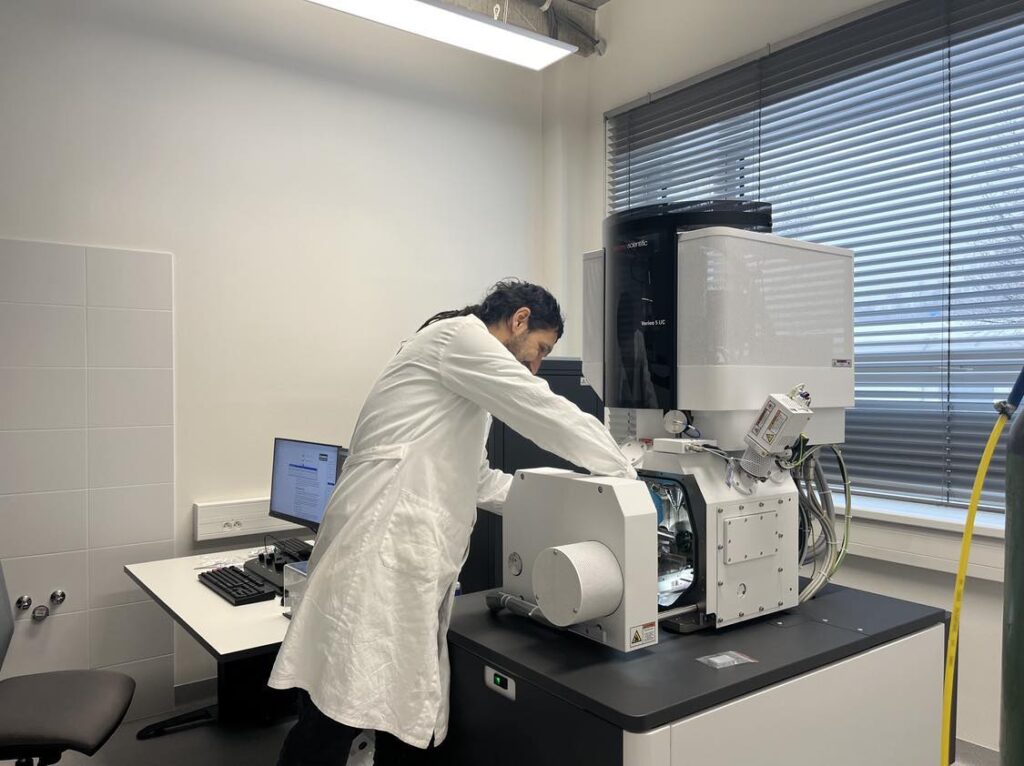The Materials-Envi Lab at the Centre for Energy and Environmental Technologies, VSB-TUO, has recently integrated a high-resolution scanning electron microscope (HRSEM) and an X-ray photoelectron spectroscope (XPS) into its research arsenal. These sophisticated instruments are employed by our team of experts to characterize material properties, particularly in the realms of energy, catalysis, and biomedicine.
“The synergy between cutting-edge research and cutting-edge equipment is indispensable. I’m greatly satisfied that we have been able to acquire this unique infrastructure owing to the REFRESH project. We will be able to obtain highly detailed information on the chemical composition, structure and properties of the materials being developed. In addition, both techniques can be used simultaneously, so that we can elucidate the chemical composition and structure of specific objects visualized through a microscope,” explained the Head of the Materials-Envi Lab, Radek Zbořil
The high-resolution scanning electron microscope (HRSEM) is a unique tool for detailed surface and structural analysis of nanomaterials in both 2D and 3D dimensions. Within the Materials-Envi Lab, it enables us to describe the size, structure and morphology of the studied materials and nanostructures with a unique capability to combine scanning and transmission mode (STEM) measurements with accurate chemical mapping.

High-resolution scanning electron microscope (HRSEM)
Particularly x-ray photoelectron spectroscopy is intended for complex chemical analyses (quantitative and qualitative) and analyses of chemical states of surfaces of various samples. This advanced technique is used for chemical and structural analysis of surfaces of solids or frozen samples. “The device in our laboratory will be used to describe the chemical and structural composition of materials including the description of chemical bonds in developed materials with the possibility to distinguish different functional groups or valence states in individual elements,” explained Ondřej Malina.
MEL scientists will use these techniques primarily for the development of a new generation of catalysts, energy storage and conversion materials or new materials for environmental and biomedical applications.

X-ray photoelectron spectroscope (XPS)


